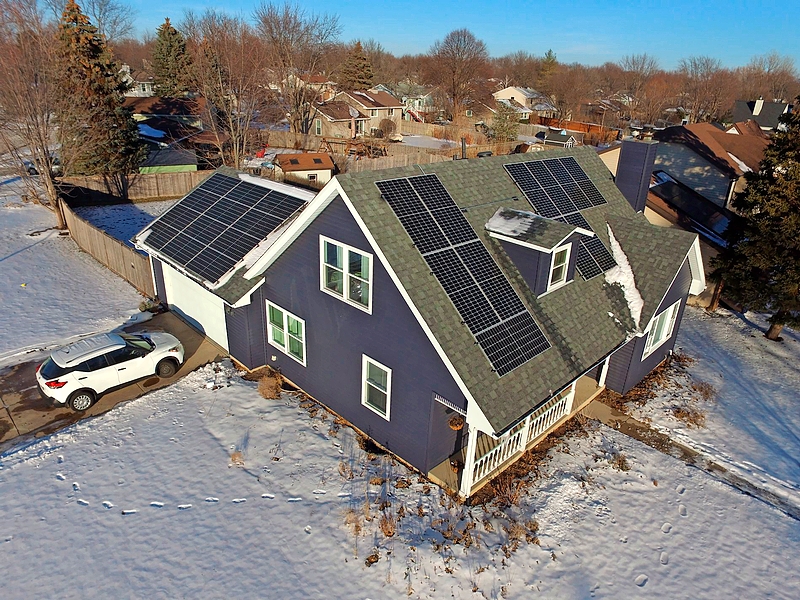Here Comes the Sun (and the Savings)
By Mark Loehrke
Appears in the February 2023 issue.
Exploring the potential environmental and financial benefits of residential solar

Once upon a time, the guy down the block with the solar panel on his roof might have seemed like an environmental eccentric. Times change, however, and suddenly there are a lot more solar panels dotting roofs throughout the western suburbs these days. And, given the proliferation of new incentives to be found in recently passed legislation, those onetime eccentrics now have a lot more company—and are looking pretty smart indeed.
“Years ago homeowners weren’t very open to solar because they really didn’t know much about it,” says Igor Grujicic, an energy consultant with Safeguard Solar in Aurora, which has seen its number of residential solar projects increase by an average of nearly 400 percent every year since the company began doing installations about four years ago. “But last year in particular we started dealing with a lot more clients who had educated themselves and knew exactly what they wanted—the kinds of panels, the inverter and, of course, the rebates.”
Those rebates Grujicic mentions may turn out to be a game-changer for residential solar participation in Illinois. Signed into federal law in August, the Inflation Reduction Act includes a tax credit equal to 30 percent of the cost of installing home solar. Meanwhile, the Illinois Climate and Equitable Jobs Act from September 2021 provides an incentive that could save rooftop solar customers roughly 40 percent of their costs. The combined result of these two incentives? A formerly $25,000 residential solar system could come in as low as $7,500—and for Naperville residents who take advantage of the city’s solar installation rebate program, that number could be another $1,000 to $3,000 lower.
As for the types of homes that can most benefit from the energy-savings of solar, Grujicic says south-oriented properties with decent roof slopes and little to no shade are ideal. These types of homes can expect the right size solar installation to cover almost all (or in some cases, more than) a household’s energy needs, basically freeing them from the public utility power grid. Combined with the various rebates and incentives being offered, Grujicic believes solar these days is becoming both an environmental and a financial decision that may leave those without it looking like the outsiders.
“If a homeowner takes the time to do the research or talk to a specialist at any solar company,” he says, “they’ll likely be blown away by how affordable it is to do this in Illinois these days.”
Do the Math
Sunny Money
According to EnergyBot, the average price for a home solar panel system in Illinois is $15,300, or about $3.06 per watt. Costs vary based on the types of solar panels used and the size of the system. The average payback period is roughly eight years, depending on the cost of the system and the amount of power it generates.
Photo courtesy of Safeguard Solar


